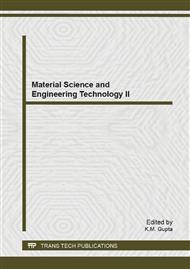p.74
p.79
p.87
p.92
p.98
p.103
p.108
p.113
p.118
Experimental Investigation on Nanofluids Effectiveness on Heat Transfer in Oscillating Heat Pipe
Abstract:
An experimental investigation of the oscillatory flow and heat transfer in a vertical oscillating heat pipe (OHP) was conducted. The oscillating heat pipe was made of a copper-glass tube. Flow inside the oscillating heat pipe at different heat loads was recorded by a high speed camera. Through this research, the authors investigated the effect of utilizing nanofluids on heat transfer amount in heat pipes. The employed nanofluids in this study were water-Fe2O3, water-SiO2 and water-TiO2 with various volumetric concentrations. The results show that after adding nanoparticles in the base fluid (here water) heat transfer rate increases significantly. It's also noteworthy, of the all applied nanofluids, water-TiO2 mixture presents the best enhancement in heat transfer amount.
Info:
Periodical:
Pages:
98-102
Citation:
Online since:
December 2013
Keywords:
Price:
Сopyright:
© 2014 Trans Tech Publications Ltd. All Rights Reserved
Share:
Citation:


